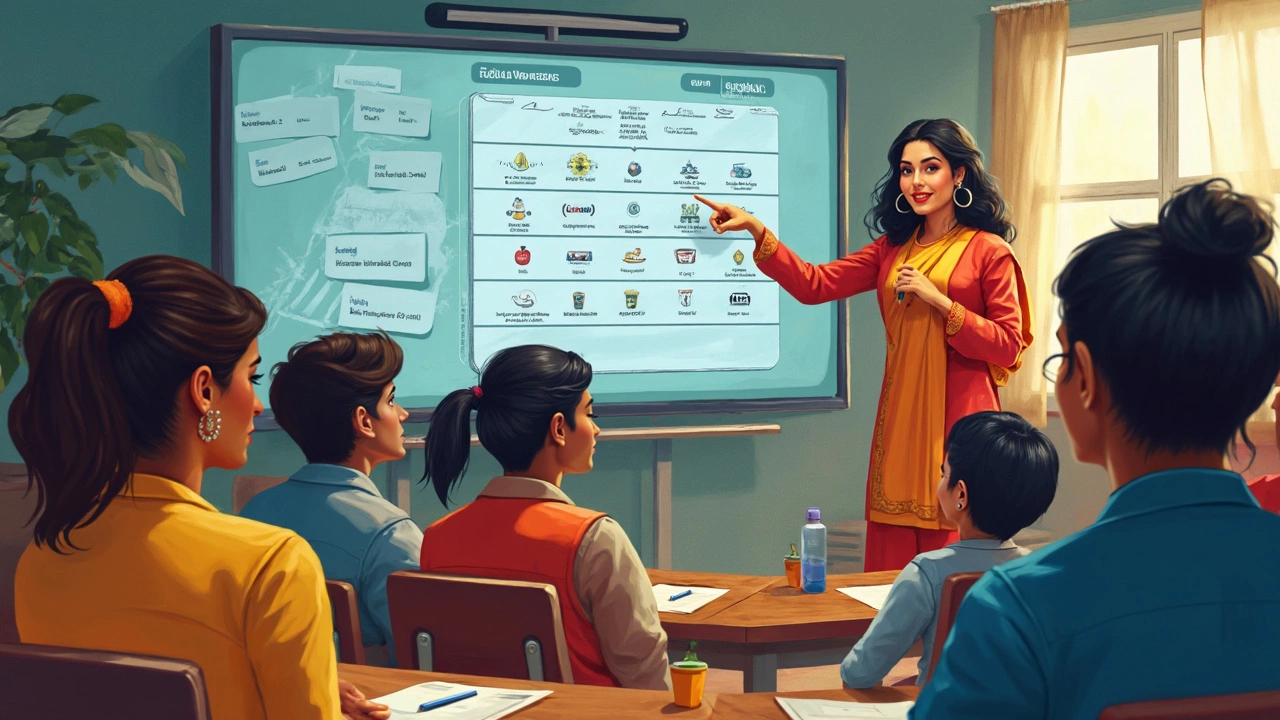Open Competitive Examination: How It Works and Why It Matters
Posted on May 8, 2025 by Elara Greenfield

Trying to land a government job or a role in the public sector? You'll hear a lot about open competitive examinations—they're pretty much the go-to way for hiring in these fields. But what does "open competitive" really mean? At its core, it means anyone who meets the basic requirements can throw their hat in the ring. There’s no secret handshake, no backdoor invites. It’s all about fairness and picking the best person for the job, based on your scores in a standardized test.
One surprising fact: these exams have been used in places like India, the UK, and the US for decades, mostly because people demanded transparent hiring after years of old-school favoritism. If you think these tests are just about memorizing facts, you’d be wrong. They cover everything from logic, general knowledge, to decision-making skills. The goal is to see not just how much you know, but how you think on your feet.
- What Exactly Is an Open Competitive Examination?
- Who Can Apply and What’s the Process?
- Inside the Exam: What to Expect
- Smart Strategies for Success
What Exactly Is an Open Competitive Examination?
An open competitive examination is the main way many public sector jobs—like government, railways, or civil services—are filled. The word “open” is key here. It means anyone who meets the basic rules, like age, education, or citizenship, can apply and compete. No insiders-only access, and no preference given to people connected to the company or agency. This keeps the playing field level and gives everyone a shot.
Here’s how it usually goes: When an agency needs to fill positions, they announce the opening, listing all the requirements and the timeline for the test. Interested folks fill out an application, maybe pay a small fee, and then prepare for the actual exam. These aren’t random pop quizzes—they’re usually planned months in advance and follow strict schedules. Agencies set them up to test exactly what they need for the job, like problem-solving, understanding of law, or even basic math and English.
You’ll often hear the phrase open competitive examination used for hiring in jobs where transparency and merit really matter. Think public school teachers, postal workers, and, in some countries, police officers. It’s all about removing unfair bias and picking the top scorers. For example, UPSC (Union Public Service Commission) exams in India get millions of applicants every year because of this fair-but-tough system.
- Anyone meeting the eligibility can apply. No need to know someone on the inside.
- The exam is publicized with details like dates, syllabus, and requirements so everyone has the same info.
- Selection is based on the candidate’s performance, not background.
Want some numbers to show the true open-door vibe? Here’s a quick look:
| Country | Annual Applicants (Major Exam) | Success Rate (%) |
|---|---|---|
| India (UPSC Civil Services) | Around 1 million | ~0.2 |
| UK (Civil Service Fast Stream) | Over 30,000 | ~3.5 |
| USA (Federal Entry Level) | Vary widely | ~2–5 |
This shows how open and competitive these exams can get. If you’re considering this path, just know it’s about putting your skills to the test in a clear and open way, not about who you know.
Who Can Apply and What’s the Process?
You might be wondering, “Can I even sign up for an open competitive examination?” The answer is usually yes, as long as you fit the basic requirements. Most of these exams only ask for a certain educational background—like finishing 12th grade, having a bachelor’s degree, or holding a specific diploma. Some roles want you to be a certain age, usually in your early 20s if it's an entry-level job, but sometimes cut-offs stretch up to 35 or even 40 for some categories.
If you meet those boxes, then you’re in. No recommendation needed. Here’s how the process typically rolls out:
- Check the official notification: Every government department with open vacancies releases a detailed notice. Watch for updates on their official websites or popular job portals; missing the deadline is the most common slip-up.
- Apply online: Almost everything is digital now. You’ll fill out a web form, upload your photo and documents—like your ID, certificates, proof of age, and sometimes category or disability certificates if they apply.
- Pay the fee: There’s often a small fee, but sometimes women, people from lower income groups, or certain reserved categories get discounts or even free applications.
- Admit card release: This is your hall ticket—download it and check the details. Sometimes venues change last minute, so double check this a week before the test.
- Attend the exam: On exam day, carry your admit card, a valid photo ID, and only the items allowed—usually a pen, maybe a transparent water bottle, and nothing else (no gadgets!).
Some exams require multiple stages. For example, you may have to clear a written test first, then face a skill or typing test, or go through an interview before landing the offer. Here’s a peek at how the numbers break down for popular government exams in India in 2024:
| Exam | Applicants | Selection Ratio |
|---|---|---|
| UPSC Civil Services | 1 million | 1:1000 |
| SBI PO | 2 million | 1:2600 |
| SSC CGL | 2.5 million | 1:1500 |
So yeah, competition is fierce, but the process is 100% transparent—what you score is what counts. If you’re eligible and follow the steps, you’re in the race like everyone else.

Inside the Exam: What to Expect
Stepping into an open competitive examination isn’t as scary as it sounds if you know what’s coming. These exams are usually designed to be as unbiased as possible. They stick to a set syllabus, a scheduled date, and a strict pattern. The toughest thing? You're often competing with thousands, sometimes millions, of other applicants for the same list of jobs. In India, the UPSC Civil Services Exam gets over a million applications for about 1,000 officer positions each year. Talk about fierce competition!
There’s usually a written test that’s split into a bunch of sections. These can include:
- General knowledge – current events, history, geography (think: what’s happening in the world and why)
- Reasoning and aptitude – logic puzzles, basic math, data interpretation
- Language skills – depending on the job, you might have an English, Hindi, or regional language section
- Specialized subjects – for technical roles, there could be a whole section based on the field (like engineering or law)
After the written test, some exams have a second round. It might be an interview, a group discussion, or even a physical test if you’re applying for something like police or defense jobs. Every stage is meant to weed out bias. Your personal background doesn’t matter—your performance does.
Here’s what a sample examination breakdown might look like if you’re headed for a government clerical recruitment:
| Section | No. of Questions | Max Marks | Typical Time |
|---|---|---|---|
| General Awareness | 50 | 50 | 30 minutes |
| Numerical Ability | 50 | 50 | 30 minutes |
| Reasoning | 50 | 50 | 40 minutes |
| English/Hindi | 50 | 50 | 20 minutes |
Timing and accuracy are everything. Most tests are multiple-choice to keep things fair—no room for guesswork after the test window shuts. Sometimes there’s negative marking, which means a wrong answer will deduct points, so it pays to answer only what you’re sure of.
If you want to crack an open competitive examination, just remember: it’s not about being the perfect student—it’s about knowing the game, managing your time, and understanding what each section wants from you.
Smart Strategies for Success
Want to ace an open competitive examination? It takes more than just cramming books. Let’s get right into practical, proven strategies you won’t want to miss.
- Start Early, Stay Consistent: Most candidates begin prepping 6-12 months ahead. Even an hour a day adds up if you keep at it. Short bursts of study beat last-minute marathons.
- Know the Format Inside Out: Before you stick your nose in the books, understand the actual test. Is it paper-based, computer-based, or both? Does it have negative marking? Look up previous years’ patterns—these rarely change much from year to year.
- Prioritize Topics that Carry Weight: Every exam has ‘hot’ sections—the ones with more questions or a higher weight. Don’t just study randomly. Grab the syllabus and tick off what's most important first.
- Practice With Real Papers: Mock tests are a game-changer. In government job exams, the difference between getting the job or not can be as little as one or two marks. Practicing with actual past papers helps you manage time and spot tricky questions.
- Don't Ignore Speed and Accuracy: Some exams have 100 questions in just 60 minutes. You literally have less than a minute per question! Use a timer while practicing to get comfortable under pressure.
- Join Study Groups: Not only does it help break the boredom, but you’ll catch details you might miss alone. Online forums for competitive exams are full of tips, shortcut methods, and regular question discussions.
- Stay Updated on Current Affairs: For jobs in countries like India, 20-25% of exam questions can focus on news from the last 6 months. A simple routine of reading headlines every morning pays off over time.
- Revise, Revise, Revise: Don’t trust your memory to hold everything from just one read. Make quick notes while you study, and glance through them every week.
Here’s a helpful table showing how top candidates typically split their weekly prep time based on interviews with government job exam toppers:
| Activity | % of Study Time |
|---|---|
| Subject Review | 40% |
| Mock Tests & Practice Papers | 30% |
| Revision | 20% |
| Current Affairs | 10% |
Remember, most people who clear these tests aren’t geniuses. They’re just more organized and persistent. Stick to your plan, tweak what doesn’t work, and don’t compare your journey to someone else’s. Keep showing up, and your chances shoot up, too.